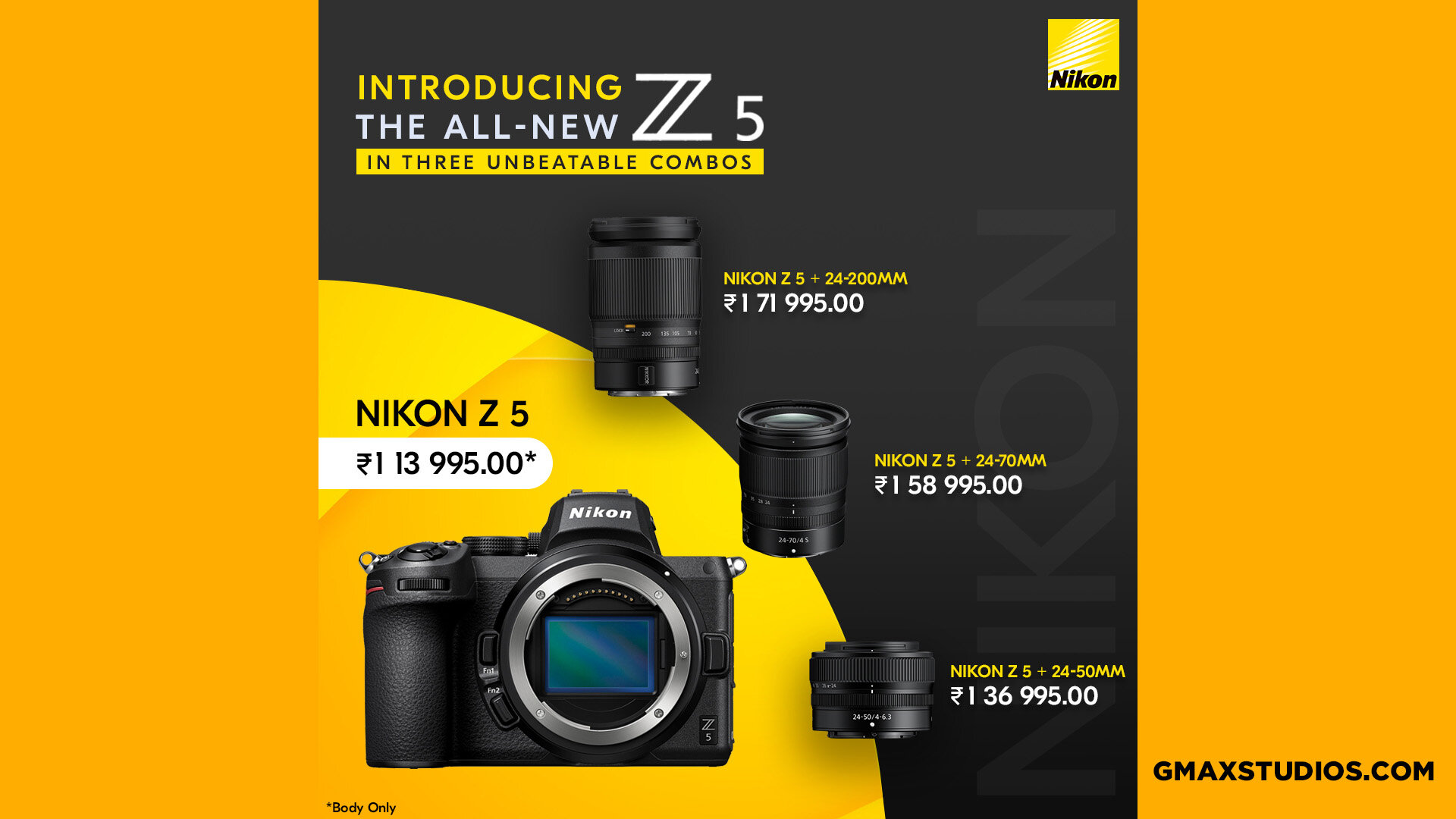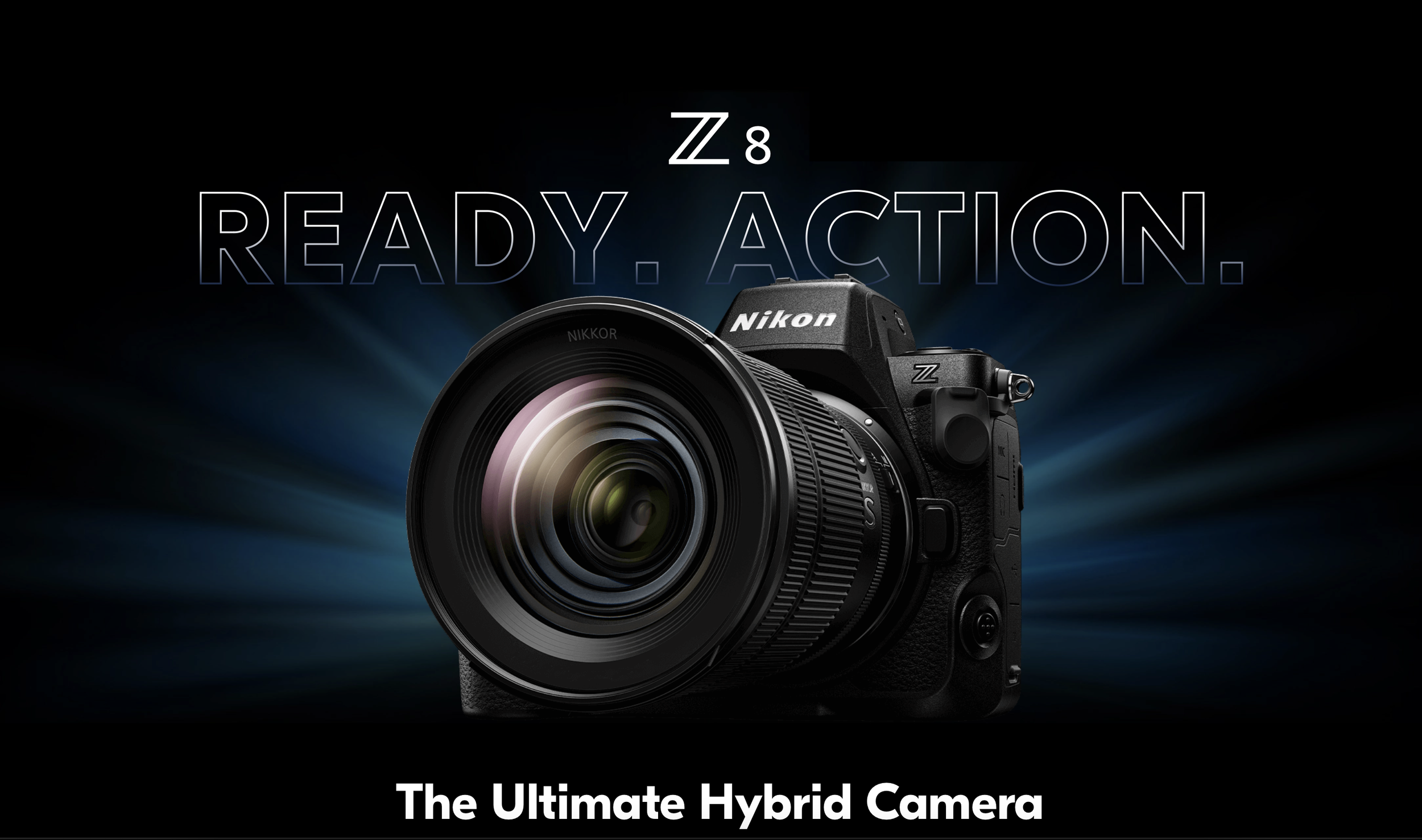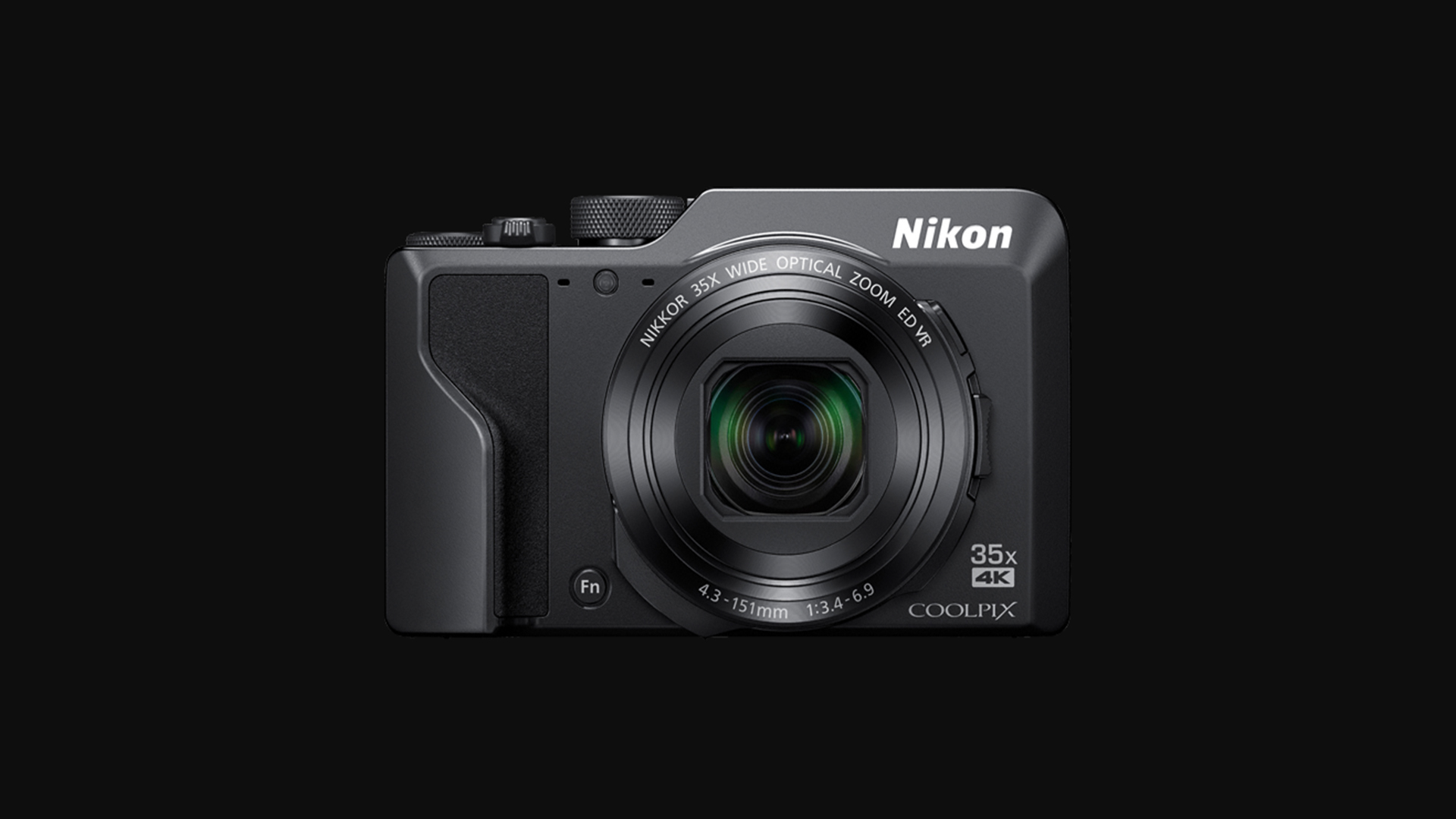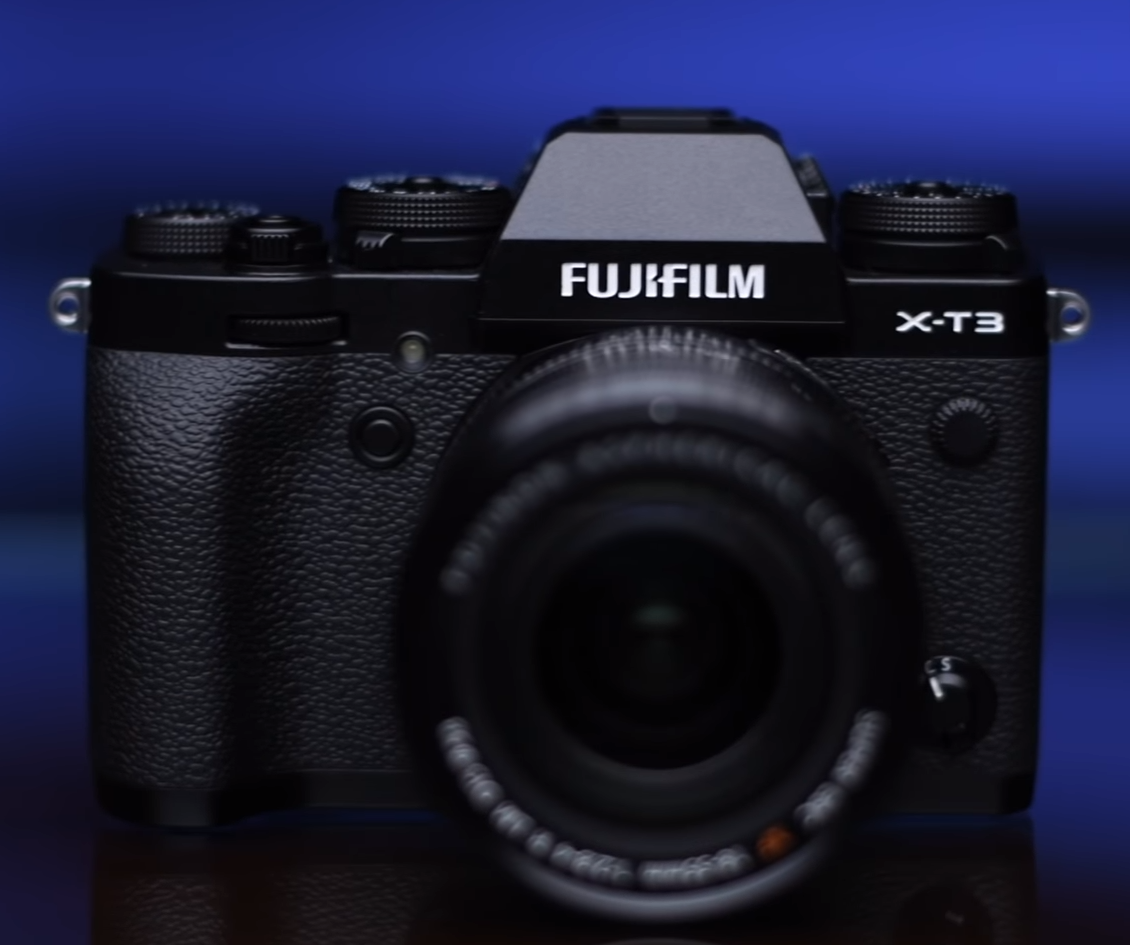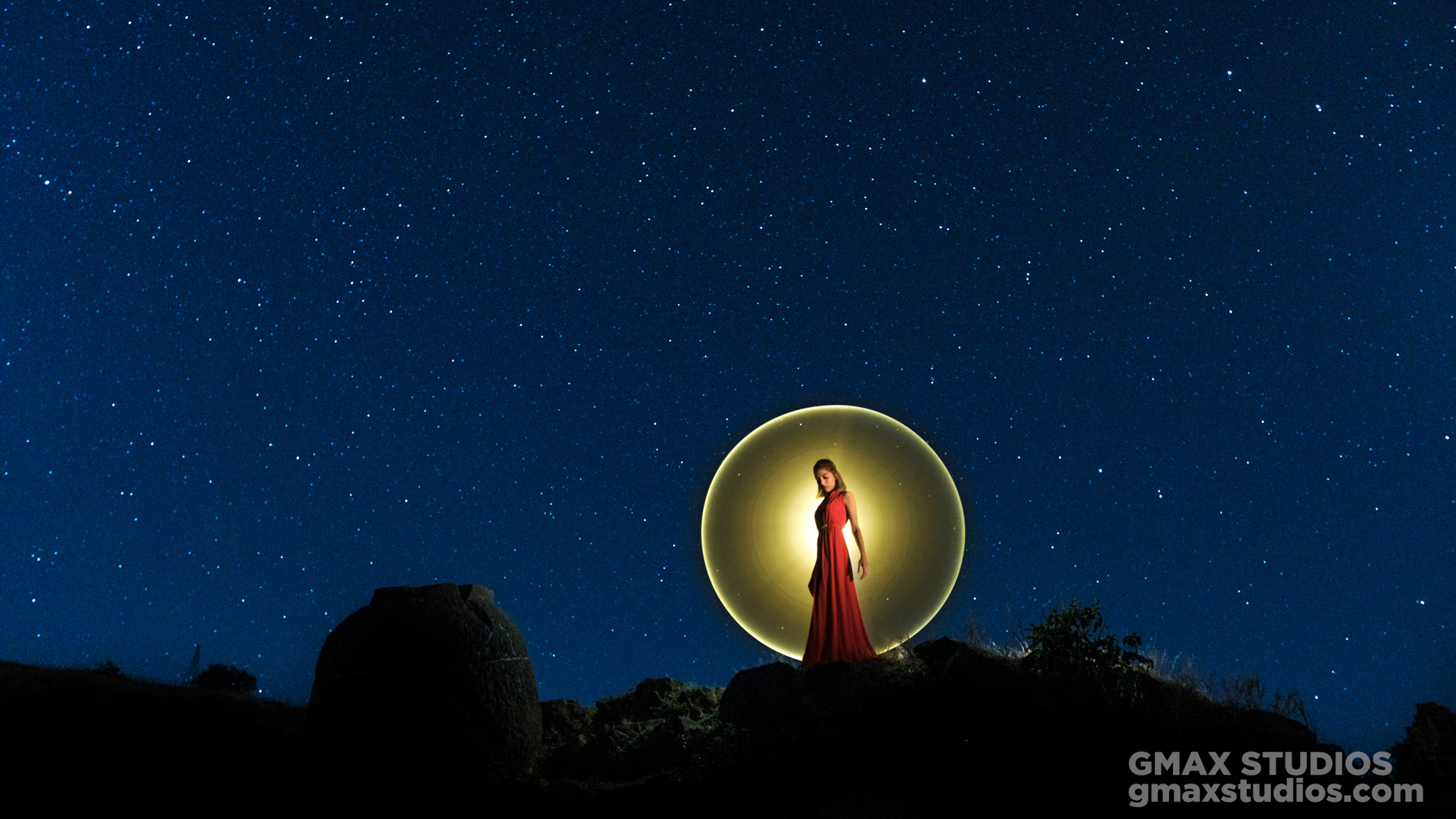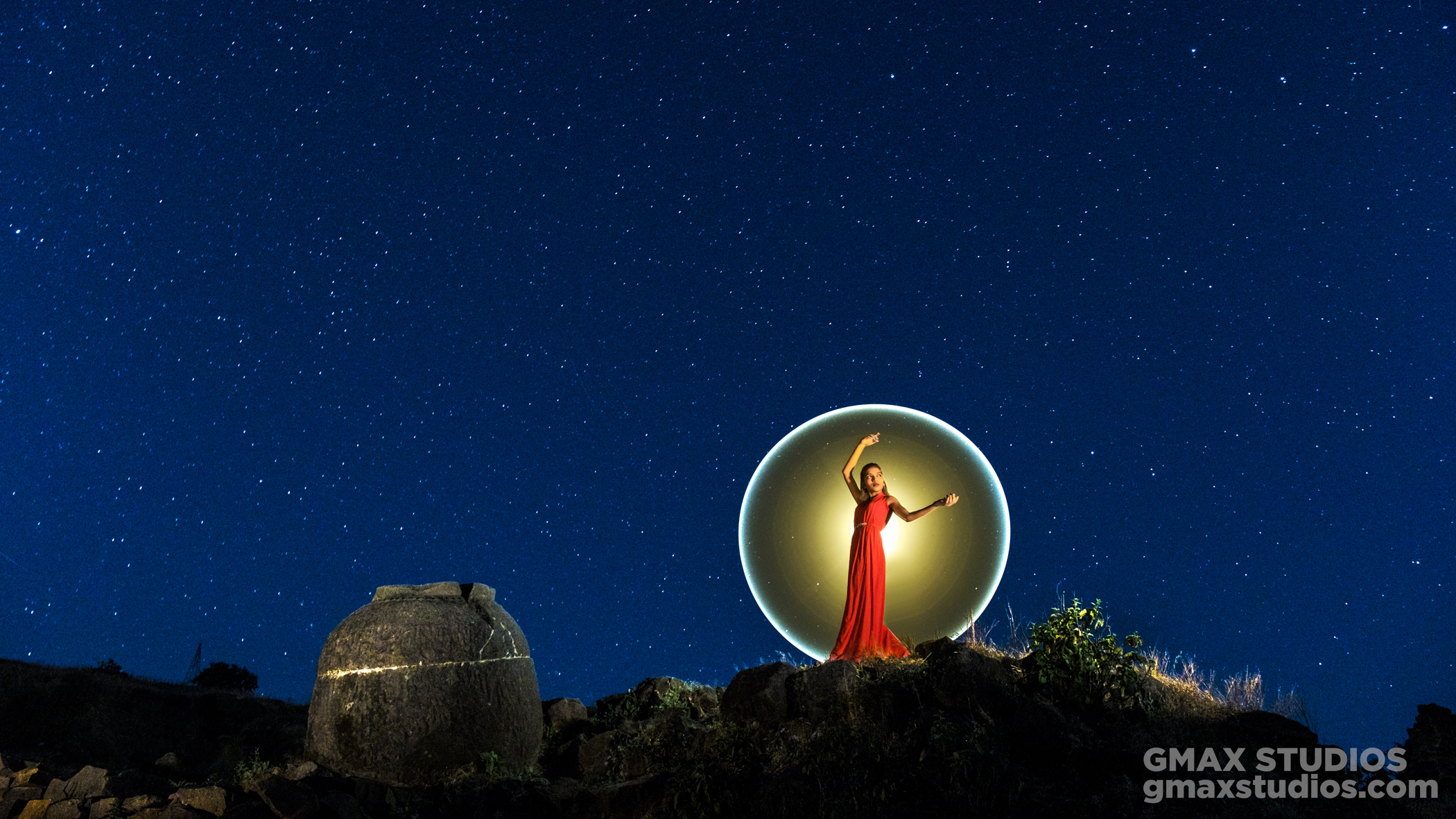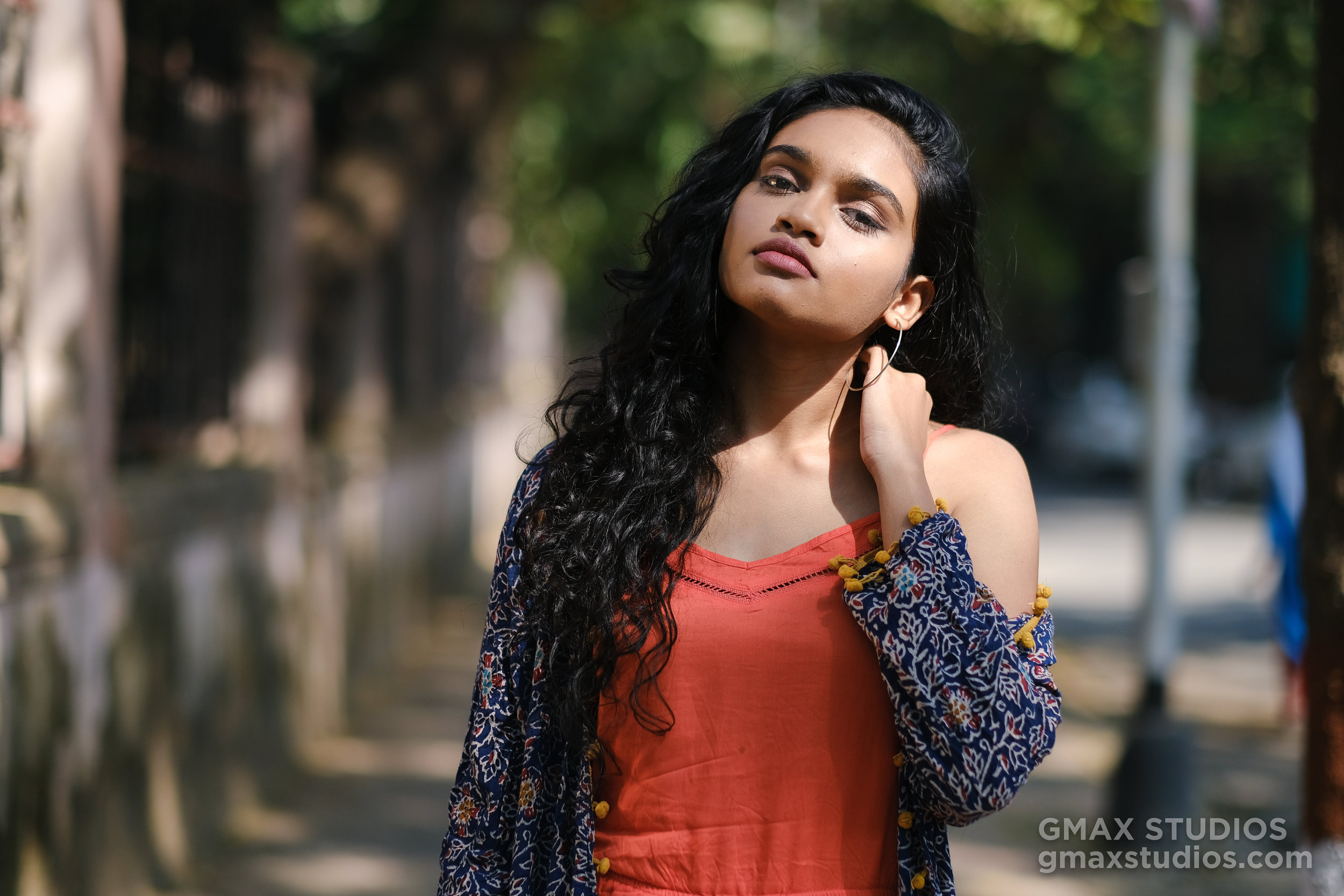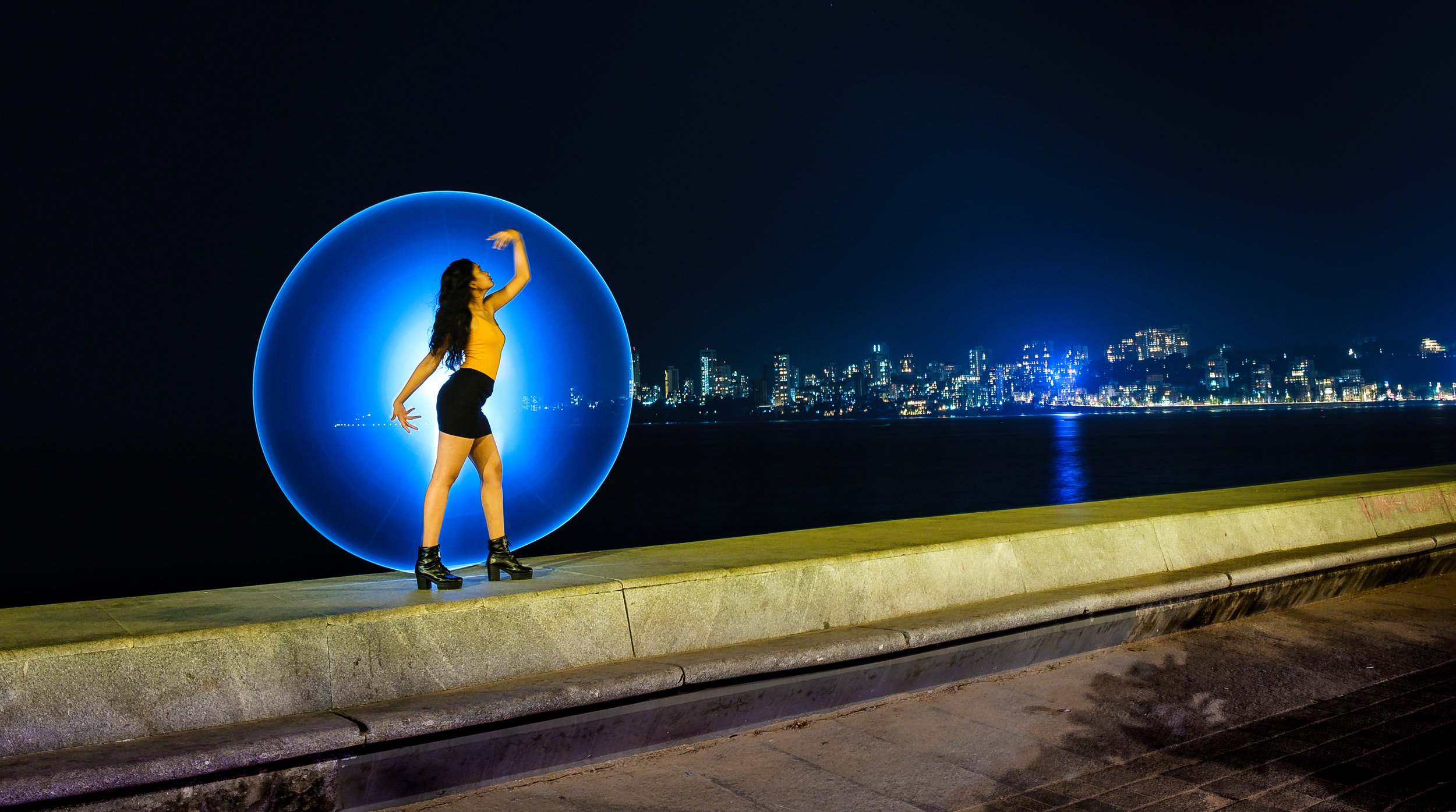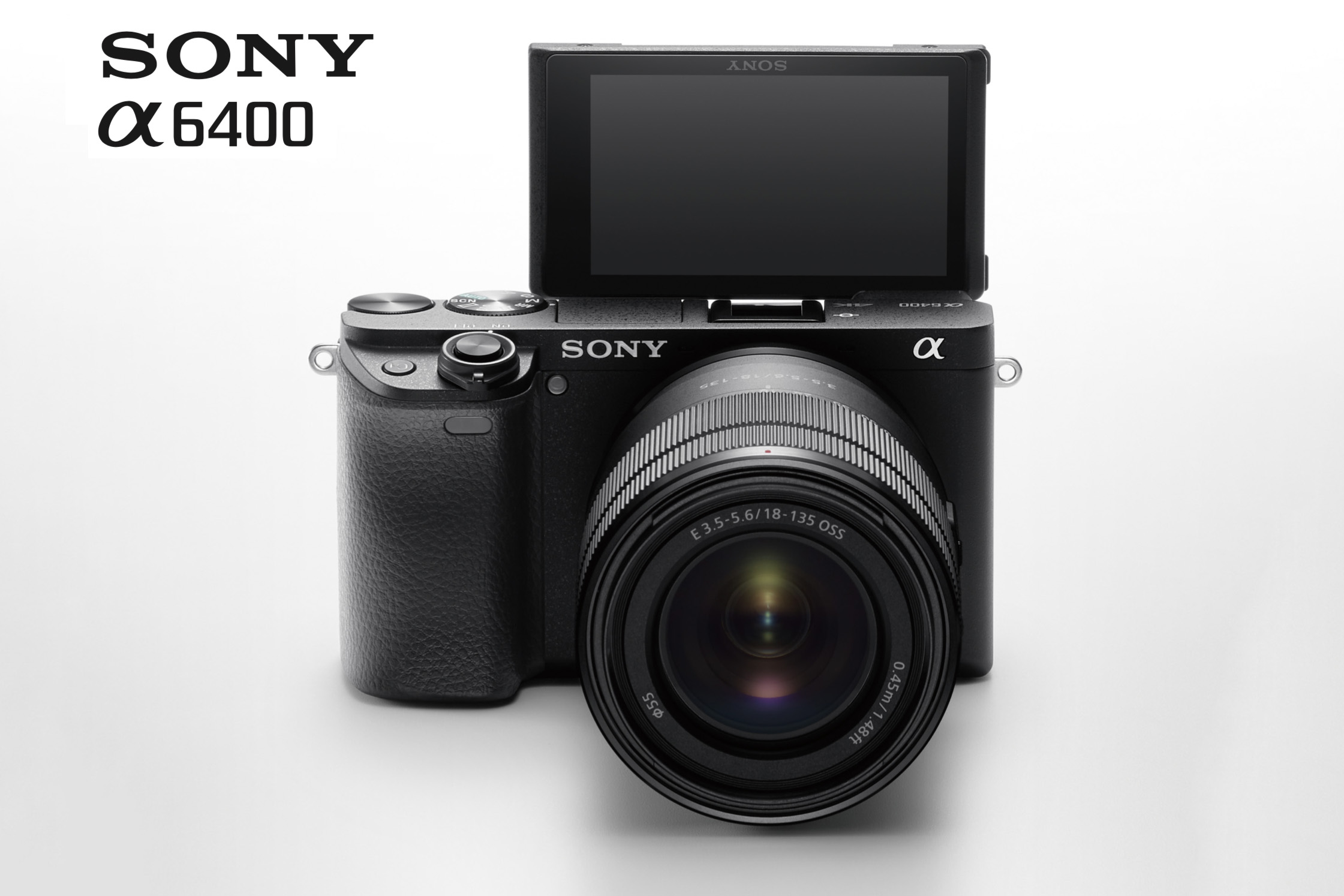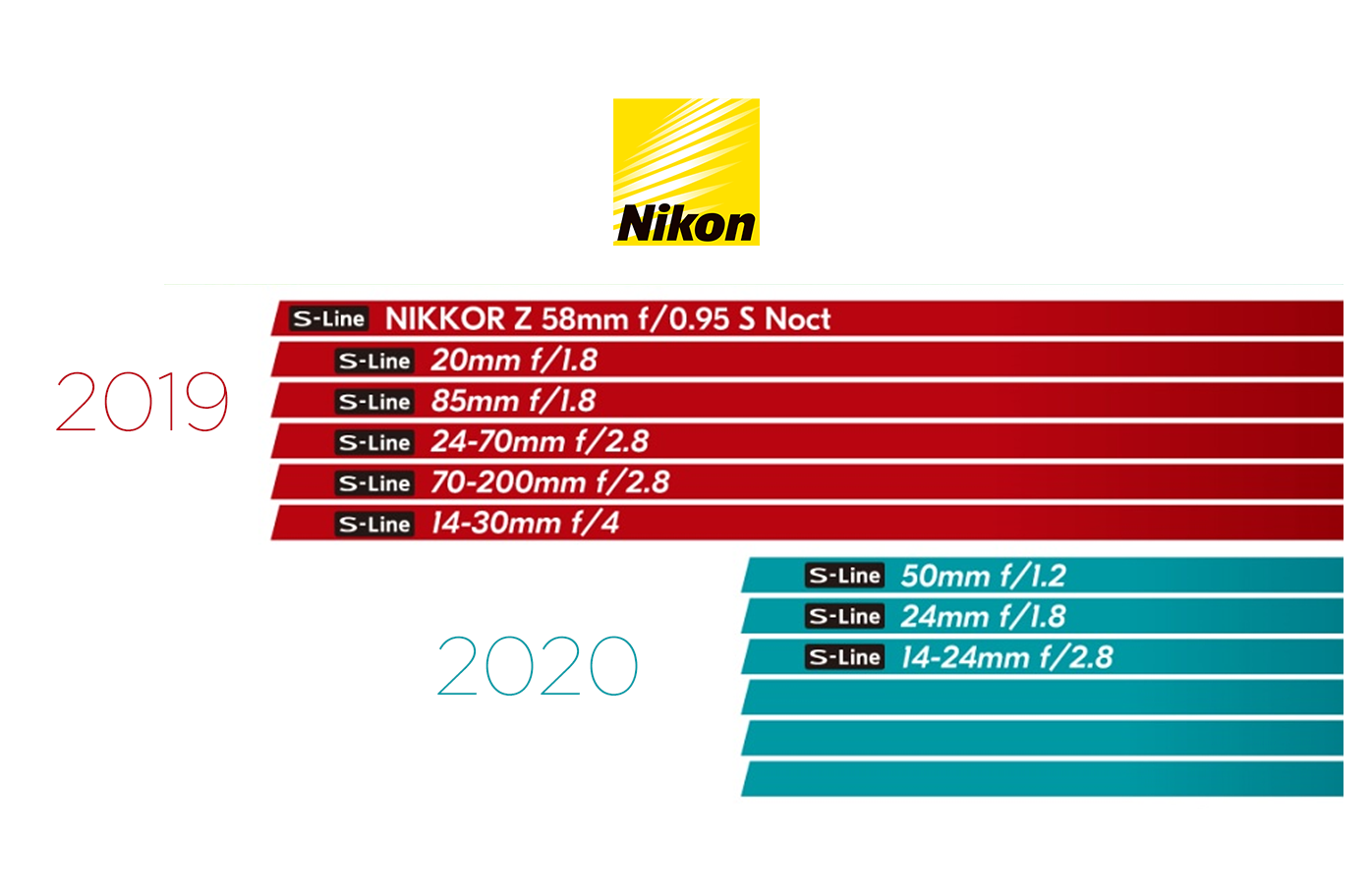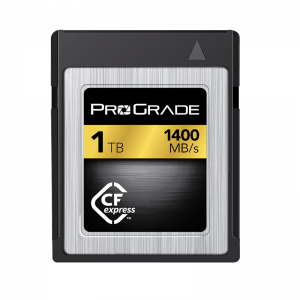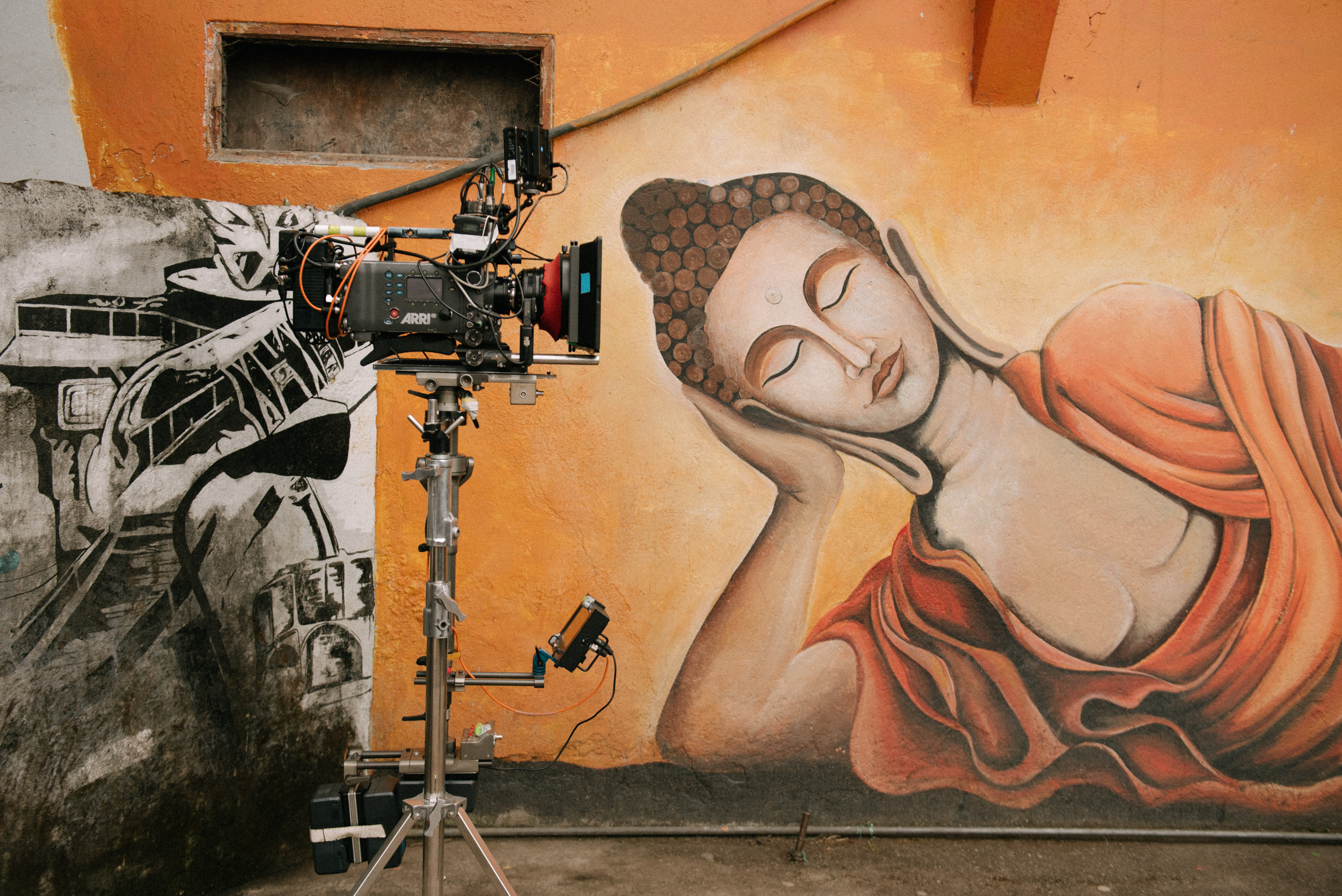
Nikon Z5 price in India and launch
The most awaited mirrorless camera from Nikon, the Nikon Z5 has just gone on sale in India. It is available in a variety of options including body only and many kit variations.
Nikon Z5 price in India
The pricing (MRP - maximum retail price) of the Nikon Z5 in India is as follows:
Digital Camera Z 5 Body Only INR 1,13,995
Digital Camera Z 5 Kit with NIKKOR Z 24-50mm f/4-6.3 Lens INR 1,36,995
Digital Camera Z 5 Kit with NIKKOR Z 24-70mm f/4 S Lens INR 1,58,995
Digital Camera Z 5 Kit with NIKKOR Z 24-200mm f/4-6.3 Lens INR 1 71 995
NIKKOR Z 24-50mm f/4-6.3 Lens INR 39,995
There is also an inaugural offer where a 64 GB UHS-II high speed card along with a card reader worth INR 12,999 is bundled free with the camera.
For the unboxing and first look and review go to the GMax Studios YouTube channel.
Nikon India is quoted as saying:
Nikon India is pleased to announce the start of sales of new mirrorless camera Nikon Z 5.It is compact and lightweight, allowing users to move freely as the camera only weighs approximately 675g. Capture stills and videos beautifully in lowlight scenes and render details sharply even with handheld shooting. Camera shake is accurately detected and compensated to provide optimal effect with its 5-axis in-camera Vibration Reduction (VR) of up to 5.0 stops.
The NIKKOR Z 24-200mm f/4-6.3 Lens is a compact delight! The lightweight size enhances the versatility for adventurous creators on the go. The lens features ARNEO Coat, allowing users to capture stills and videos with clarity and precision. We take pride in our optical technology, and we are certain that this new addition will help get our users redefine their experience.
The NIKKOR Z 24-70mm f/4 S Lens is a compact and lightweight lens, the NIKKOR Z 24-70mm f/4 S reproduces even the most minute details in stunning high resolution. Witness consistently high image quality with minimal lens aberrations and sufficient peripheral illumination. Slim, yet rugged, the NIKKOR Z 24-70mm f/4 S can endure harsh weather conditions with dust and moisture resistance – perfect for the great outdoors.
The NIKKOR Z 24-50mm f/4-6.3 is compact body is the shortest and lightest among full-frame format zoom lens for mirrorless cameras , weighing at approximately 195g and featuring a button-less retractable mechanism being the slimmest at only 51mm . Bring the NIKKOR Z 24-50mm f/4-6.3 wherever you go, with its body being meticulously designed with dust- and drip-resistant performance , preventing dust and water droplets from entering the lens.
Get to choose between two VR mode options to meet your shooting needs: NORMAL mode when you’re looking to capture still subjects and SPORT mode for moving subjects. In addition, the VR unit is designed with a lock structure feature to prevent the image sensor from damage caused by shaking. The Nikon Z 5 also features improved user-friendliness, It is easy to handle as it features intuitive operation via a touch screen and its customisable “i-Menu” provides shortcuts to frequently used settings in one interface. The camera is made versatile and can store creations more effectively with its double SD memory card slots. Also, customise your settings with you own effects! The camera has 20 different types of Creative Picture Control, which works like your favourite app filters, that apply to both stills and movies, so your creations get an immediate uplift. Easily upload your photos on social media with #NikonSnapBridge. The trusty camera supports long hours, thanks to its battery’s new increased capacity. For those who never leave home without having their devices fully charged, rest easy in knowing that the camera can be charged on the go as it allows for USB charging and using the USB connectivity to a power bank as a continuous power supply.
Fujifilm X-T100: The Entry Level Mirrorless Camera
In 2018, Fujifilm released its entry level mirrorless camera that look a lot like an old SLR camera. The plus points of this device is that it has an electronic viewfinder and it has an aluminium body that gives it a rich elegant and retro look.
In 2018, Fujifilm released its entry level mirrorless camera that look a lot like an old SLR camera. The plus points of this device is that it has an electronic viewfinder and it has an aluminium body that gives it a rich elegant and retro look.
Source: GMax Studios
GENERAL SPECIFICATIONS
Sensor: 24.2-million APS-C CMOS sensor
Output size: 6000 x 4000 pixels
Focal length mag: 1.5x
Lens mount: Fujifilm X-mount
Shutter Speed: 30secs-1/4000sec (30secs-1/32000sec in electronic shutter mode)
Sensitivity: ISO 200-12,800 (standard) ISO 100-51,200 (extended)
Exposure modes: PASM, SR+, Auto
Metering: Multi, Spot, Average
Exposure Compensation: –5 to +5 EV, in increments of 1/3EV
Continuous shooting: 6fps
Screen: 3in, 1,040k-dot 3-way tilt touchscreen
Electronic Viewfinder: 0.39in, 2,360k-dot 0.62x magnification with 100% coverage
Video: 4K (15p) Full HD (60/50/24/23p)
External mic: 2.5mm stereo mini connector
Memory Card: SD, SDHC, SDXC
Power: NP-W126S battery
Battery life: 430 shots
Dimensions: 121.0x83.0x47.4mm
Weight: 448g with battery and card
AT A GLANCE
It has a 24.2MP APS-C size sensor, weighing in just under 450 grams and records videos at 4K for up to 30 minutes at any given time. The viewfinder on the X-T100 is a 0.39-inch 2,360K-dot OLED colour unit which can also be viewed on a 3-inch LCD touchscreen that can be tilted to be used on tight angles. The camera is enabled with WiFi and Bluetooth v5.0 LE and will thus let you transfer videos and photos to other devices wirelessly.
Source: GMax Studios
Other photography features include Advanced SR AUTO, Eye detection AF, Face Detection, Interval timer shooting, Electronic Level and HDR mode. The battery on the X-T100 will be able to last you up to 90 minutes of 4K video recording or an average of 430 stills depending upon how long you keep switching on the camera.
FEATURES
Even though Fujifilm endorses the X-T100 as just an entry level mirrorless camera, they have tried to incorporate as many features as they could to make it more desirable amongst budding photographers as well as to target those who wish to transition from DSLR to mirrorless.
Some of the best features that make this camera usable as well as convenient are:
Wireless Connectivity
Film Simulation
4K Burst Shooting
Multi Focus
The above features not only make a X-T100 a convenient camera but also makes it an unstoppable, robust machine.
BUILD AND HANDLING
Source: GMax Studios
Other than having a strong resemblance like the other X-T models, for being an entry level camera, it is built very well. The feel isn’t as similar to an X-T2 or X-T3, but the dial placement and the leather finish shows where the design has come from.
The X-T 100 is very light when you even compare it to the native mirrorless camera because of its aluminium and plastic body. The front handling front the right side of the camera is not very reliable which can be improved by attaching a detachable-grip that comes with the box. It would have been nice to see a rubberised thumb rest at the rear too. As it is it’s made of hard plastic and can be prone to get slippery with wet or sweaty hands.
Like the professional cameras the Fujifilm X-T100 is not weather or dust resistant so we had to be cautious with it while shooting under wet or humid environment.
VIEWFINDER AND SCREEN
Source: GMax Studios
Having the option to raise the X-T100 to your eye and clearly see what’s contained in the frame is one of the huge advantages of this camera. The viewfinder is very good for reviewing images in bright sunlight too, however you will notice there’s a momentary delay before each image is rendered sharp.
Its is also possible to use the EVF with the touch screen for actions such as moving auto focus points and double tapping the screen for detailed magnified view.
Source: GMax Studios
Source: GMax Studios
When it comes to the 3-way articulating screen, it is very handy for vloggers. It can be angled out by 180 degrees to aid with self-portrait shooting. It is very convenient and the touch screen function still works when its tilted out in any way.
PERFORMANCE
Despite a few criticism regarding the slow response time of the touch screen, X-T100 is very reliable when it comes to capture images. It may not have an X-trans sensor but the colours of this camera are very active and lively, exactly what we expect from Fujifilm.
The camera provides accurate focus in bright or low-light situations. For those who’d like to shoot discreetly, there’s the option to take shots silently by activating the electronic shutter.
The image quality of this camera is very good, you can get detailed images with high ISO range. The X-T100 is capable of resolving fine detail, with a good amount of scope to crop in when required. Detail holds up well beyond ISO 800 and only starts to dip when you push past ISO 3200.
Source: GMax Studios
Other than that it has:
4K Burst
HDR
High Speed Shooting (6 fps)
Film Simulations
When it comes to video, it does not offer much versatility. You can only record in 15p when it comes to 4K, continuously for 30 minutes which heats up very fast. In HD you can record up to 59.94p / 50p / 24p / 23.98p for 30 minutes straight and the camera does not heat up that much compared to 4K.
It is advisable to use a card with UHS Speed Class 3 or higher when recording 4K.
LENS
The X-T100 is only available with the XC 15-45mm f/3.5-5.6 kit lens. This is Fuji’s first attempt at making a compact motorised zoom. The lens extends by 24mm in length when the camera is switched on and it’s operated via two control rings: an inner one that operates the zoom in power assisted mode, and an outer ring that either acts as a focus ring. It’s good the lens automatically reverts to the last focal length setting used when the camera is switched off and back on again, but its motorised nature does slow you down.
Source: GMax Studios
VERDICT
Source: GMax Studios
Those who would like to enter the mirrorless world or who are advancing from the world of mobile photography this shall serve you as a loyal subject. As a camera designed for first-time users it has the features that go up to par with most of the camera’s in the market. Of course, it cannot compete with the professional camera Fuji has introduced such as X-T2 or X-T3 but it has a few features which make it stand out from the crowd, from both an aesthetic and performance point of view.
Those who would like to relish the infamous Fujifilm colours then this is the camera for you. The X-T100 is arguably the most attractive entry-level camera on the market at its price point.
Source: GMax Studios
Camera Canopy, An Umbrella For Your Camera | Now Shoot In The Rain Without The Pain
This nifty device offers a much needed solution to photographing in the rain. What do you think?
There’s good news for togs who love to shoot in the rain. There’s a device called camera canopy that puts a protective roof (canopy) over your camera and it uses the hot shoe for mounting.
www.cameracanopy.com
Togs have been battling the rain ever since camera was invented, and we now have something that doesn’t seem so difficult to set up. Although the design looks a bit ridiculous, it offers much needed safety from the elements.
Camera Canopy seems decently built, and the material looks pretty study too, The roof extends to accommodate lenses with focal lengths upto 500mm by sliding right out. It’s made in the USA and will incur shipping costs if you live in another country, but it’s a one time investment/solution for 80 USD, which comes up to around 5700 Indian rupees.
The second roof extends to support lenses up to 500mm
www.cameracanopy.com
In the video below, you can see how the device works. We for one, would be happy to use this because Mumbai rains are a pain to deal with. The only thing we are worried about is if it would fly off in the wind or not, but for the most part it looks like a decent solution.
You can one for 80$ from the company’s website here
Would you be willing to buy this or do you think there are better and cheaper options available? Let us know in the comments below.
(Via Petapixel via Digital Camera World via Camera Canopy)
Panasonic Full-Frame S1 & S1R Specifications Released
Panasonic’s new S series is endorsed as a photo as well as a video camera, much like the GH5. Panasonic has two different variants in it, which are, Lumix S1 and Lumix S1R.
On Friday, Panasonic introduced the full specifications of their new full-frame mirrorless systems; Lumix S1 and Lumix S1R. The new cameras are based on the L-Mount standard, which boasts a well-balanced, large inner diameter and compact dimensions for a flange focus to realize optimum size and performance as a mirrorless camera system.
Panasonic’s new S series is endorsed as a photo as well as a video camera, much like the GH5, the people anticipate it to be one of the best in the market, minus the micro 4/3 sensor. As stated before, Panasonic has two different variants in it, which are, Lumix S1 and Lumix S1R.
Lets talk about the S1R first:
Lumix S1R
47.3-megapixel full-frame MOS sensor that provides a wide dynamic range and excellent performance at high sensitivity (ISO 25600 Max sensitivity)
4K VIDEO - Up to 4K 60p/50p recording plus 6K Photo functions and HLG Photo
Integrated Body I.S. (Image Stabilizer) for powerful handshake correction
PHOTO - The LUMIX S1R also boasts high speed burst shooting at 9 fps (AFS) or 6 fps (AFC)
187MP HIGH RESOLUTION MODE – A sensor shift technology suitable for taking very high-resolution landscapes and fine art photos via tripod with toggleable motion correction capabilities
The Live View Finder (LVF) which boasts the world’s highest 5,760k-dot resolution
Dust/splash*/freeze-resistant design withstands heavy field use under harsh conditions for high mobility
Dual card slots - Supports both UHS II and XQD card
Tri-axis tilting touch screen that is 2.1 million dots
Lumix S1
FULL FRAME SENSOR – 24.2-megapixel full-frame (35.6mm x 23.8mm) MOS sensor that provides a wide dynamic range and excellent performance at high sensitivity (ISO 51200 Max sensitivity)
4K HDR VIDEO - 4K 60p/50p, 4K 24/30P unlimited recording, 4K60P 29:59 min limited recording. HDR Mode and Hybrid Log Gamma (HLG). V-Log with Internal 4:2:2 10-bit 4k30/24p (4K60p output only) available via optional software upgrade key
Integrated Body I.S. (Image Stabilizer) for powerful handshake correction
PHOTO - The LUMIX S1 also boasts high speed burst shooting at 9 fps (AFS) or 6 fps (AFC)
96MP HIGH RESOLUTION MODE – A sensor shift technology suitable for taking very high-resolution landscapes and fine art photos via tripod with toggleable motion correction capabilities
The Live View Finder (LVF) which boasts the world’s highest 5,760k-dot resolution
Dust/splash*/freeze-resistant design withstands heavy field use under harsh conditions for high mobility
Dual card slots - Supports both UHS II and XQD card
Tri-axis tilting touch screen that is 2.1 million dots
“The LUMIX S1R/S1 also incorporates advanced AI technology that detects specific subjects - humans and fast-moving animals, including dogs, cats and birds. The camera keeps tracking these subjects even when they turn their back to the camera.”
- Panasonic Global
Source: Panasonic Global
For the terminal, an HDMI Type A is provided. Plus, a cable lock holder for the HDMI cable is included in the LUMIX S1R/S1 to prevent unplugging trouble on location.
Other than that, both the cameras have:
Photo Style Featuring a New Flat Mode
Variable Aspect Ratios With New 65:24 and 2:1
Flicker Decrease
Highlight Weighted Light Metering Mode
Bluetooth and Wi-Fi
Lumix Tether and Lumix Sync
These mirrorless systems will be using the L mount lenses. These lenses are made under an alliance between Leica, Panasonic and Sigma. At the moment, Panansonic has announced only three lenses, which are, 50MM F/1.4, 24-105MM F/4 and 70-200MM F/4. Panasonic has also released a road-map and has intentions of releasing more glass by the year 2020.
Source: Panasonic Global
We cannot wait to get our hands on either of these cameras. Being Panasonic’s first full-frame mirrorless cameras they wish to go neck on neck with the new Nikon Z series full-frame mirrorless systems.
What do you guys think about the specs?
Yay? or Nay? Let us know in the comments below.
Fujifilm X-T3 Review: The APS-C Champion!
Fujifilm India XT3 review .
We at GMax Studios, have been Fujifilm users for a pretty long time, from using their analog cameras and their films to their mirrorless cameras like the X-E1 and the X-100 series. Fujifilm were one of the first companies to introduce mirrorless cameras and slowly the traction caught on and Sony and Panasonic made up for the lost miles. But now, Fujifilm is back with a bang with its new mirrorless camera, with its predecessor: Fujifilm X-T3.
Also read: Fujifilm X-T3 price in India reduced
Source: Fujifilm Global
Body
The Fujifilm’s magnesium alloy body makes it a very rugged and solid camera to feel and hold.
It has got dials on top for the ISO exposure compensation and shutter speed, it is also sealed against dust and moisture which makes you very confident while using it extreme conditions.
Almost all the dials and the buttons at the back of the camera are user customizable making using this camera truly a joy.
You can even customise the touch screen patterns on the X-T3 by assigning the pattern that is; left, right, up and down.
It also has two UHS two slots.
Inside this camera it has a 26 megapixel X-Trans CMOS sensor, but thanks to the X-Processor 4 you can hardly feel any lag while taking pictures
Source: GMax Studios
The Fuji Colours
There is total of nine colour profiles in-built in the Fujifilm X-T3:
PROVIA/STANDARD
Velvia/VIVID
ASTIA/SOFT
CLASSIC CHROME
PRO Neg.Hi
PRO Neg.Std
ACROSS (+YE/R/G FILTER)
ETERNA
MONOCHROME
Source: GMax Studios
What made Fujifilm great in the days of analog photography was their colours and it did some phenomenal work with their film. In fact, it was impossible to think of film photography without thinking of Fujifilm and when they came out with their mirrorless cameras they were able to replicate the same colour using the colour profiles in their mirrorless cameras. The Fujifilm X-T3 has a total of 16 film simulation modes including our personal favourites which are classic chrome and across in fact we will go as far as to say that the Fujifilm X-T3 is one of those cameras that make everything look good and we really don't feel like touching the JPEGs at all the images coming out of the Fujifilm X-T3 are extremely sharp thanks to the superb optics of the Fujinon lenses. This is one camera where even the kit lens shines.
Source: Fujifilm Global
ISO
The Fujifilm X-T3 has an ISO range of 160 to 12,800 and in the H-mode while taking photographs, you can go as high as 51,200. As far as noise is concerned, while we were shooting with it we did not see any noise up to 4000 ISO. In fact, the colour noise at ISO 4000 is practically zero.
Source: GMax Studios
Focus Points
This camera has a total of 425 Hybrid autofocus points which cover almost the entire frame. It also has face-detect and eye-detect which work pretty well. In fact, it is the only camera which allows you to choose whether you want to focus on the right eye or the left eye which makes it pretty unique, in our opinion. The face and eye detect also worked under streetlights which was personally quite surprising to us.
AF-C
When you're taking pictures with the Fujifilm X-T3 you can control the autofocus speed by using the various AF-C custom settings built into the camera. The setting include; tracking sensitivity speed tracking sensitivity, and zone area switching depending upon the subject that you are shooting.
In video mode, you can control the tracking sensitivity and the AF speed as well, if you are focusing manually. The Fujifilm X-T3 has a digital micro prism as well as a digital split image. As far as the burst mode is concerned, the X-T3 gives you extra 3 frames at a frame rate of 11 frames per second by using the mechanical shutter and gives you a speed of 30 frames a second if you are using the electronic shutter the 30 frames-per-second comes with a price though, and that is a 1.25X crop.
Source: Fujifilm Global
Source: Fujifilm Global
Source: Fujifilm Global
Video
This camera is capable of shooting 10-bit 4K up to 60 fps in 4:2:0 internally, using the HEVC codec. If that is not enough, you can shoot 10-bit 4:2:2 4K up to 60 frames per second using a compatible external recorder.
Source: GMax Studios
We know we have said this before, but the Fujifilm colours are absolutely fantastic. This is evident not only by taking photographs but shooting video as well. While they have especially made Eterna films simulation for getting the film look while shooting video, it is the classic chrome that is our personal favourite and which we feel that does not require any calibrating at all. While there are quite a few cameras on the market that do a great job with autofocus while taking photographs but while shooting video, not so much. This is where the Fujifilm X-T3 really shines.
Lens Compatibility
It is also possible to mount the Fujinon cine lenses onto this camera for some really serious video work and if all this was not enough you can shoot F log at a base ISO of 640.
Source: GMax Studios
Connectivity
As far as connectivity is concerned, there is an app for that. Using the Fujifilm camera mode you can connect the camera directly to the smartphone and control it as well as transfer photographs directly to be shared online.
Cons
So while we have absolutely loved using this camera so far there are few things that we don't like about it.
Source: GMax Studios
The first being a simple design flaw. So taking the mode dial here for example, at one end you have the video mode and at the other end you have your panorama mode. Considering that most of the people would be using either shooting the movie mode or photography mode (S mode) either these modes should have been next to each other or they should have been at the extreme ends.
Secondly, the battery life could really be improved. We know that this camera has got a new processor which is faster and the kind of data that it is processing is really a lot but then one can definitely hope.
Thirdly, we really feel that this camera would have truly been complete had the screen flipped out totally to face the shooter while shooting that is a complete flip out screen but that is not the case it flips out it tilts it flips in this strange funny manner but it does not flip out completely to face the shooter as if you were taking a selfie.
Source: GMax Studios
Last but not least, the lack of inbuilt image stabilisation that is one thing that we really missed in this camera wise shooting handheld.
The Fujifilm X-T3 is a truly spectacular camera not just for the price it comes at not just for the features that it offers but also for the colours and for the fact that it truly truly inspires you to shoot more pictures and that quality very few cameras have.
So this is what we really think about the new Fujifilm X-T3. Its small, robust, reliable and an extreme beast in a small size that it comes in.
Here are a few pictures as a result from the Fujifilm X-T3.
If you haven’t watched our latest comprehensive review on the Fujifilm X-T3, please watch it below and also do not forget to visit our YouTube channel and subscribe, if you haven’t already.
. . . . .
CES 2019 - Highlights and things to watch out for
CES 2019 highlights
CES 2019 is a wrap folks. The show that brought us a week long of excitement and gadget goodness will return after a year.
Here were some of our favorite camera products that were showcased at CES 2019.
Nikon Z Series 14-30MM f/4.0 Lens
Source: Nikon Global
Nikon introduced the new Nikorr Z series 14-30 F/4 S ultra wide zoom lens on the first day at CES 2019. The NIKKOR Z 14-30mm f/4 S is an ultra-wide-angle zoom lens that covers a 14 mm to 30 mm range of focal lengths with a constant maximum aperture of f/4 throughout the range. According to Nikon, the lens is part of the S-Line, a newly designated grade of NIKKOR Z lenses that adhere to a new benchmark in optical performance, creating new definitions of design principles and quality control.
Nikon Firmware Upgrade
Nikon has announced a firmware update that will enable raw video output to an external recorder, Eye AF and CF Express card compatibility. Nikon’s new mirrorless cameras, the Z6 and Z7 will be more than capable of outputting a RAW signal to the Atomos Ninja V.
With this new firmware update Nikon intends to announce its long awaited Eye auto-focus feature in their mirrorless cameras like the Z6 and the Z7. The Eye AF is a very good helping-hand when it comes to taking pictures such as portraits, event or street photography scenario. According to Nikon, the technology/feature is in its last and final implementation phase. In the demonstration video below, you can see it acquires the eye as fast as a Sony/Fujifilm has been able to do with their mirrorless technology.
Source: Nikon Europe YouTube Channel
Nikon has also announced that their new mirrorless cameras will be compatible with the new CF express cards after the firmware update. These cards use the same form-factors as the XQD cards which are the only data transfer interface used in the Z6 and Z7.
Source: ProGrade Digital Website
DJI Smart Controller
Source: ProGrade Digital Website
Source: DJI Global
DJI has introduced a smart controller for some of the drones it makes. By some we mean the latest drones like the Mavic 2 Zoom and the Mavic 2 Pro. DJI Smart Controller comes with a built-in microphone and speaker for “expanded options” such as live streaming. It can also playback video through the HDMI output port at 4K with H.264 or H.265. Of course, wi-fi is required for live streaming.
Source: DJI YouTube Channel
Sharp Micro Four Thirds 8K Camera
Sharp 8K Pocket Camera
Sharp introduced a prototype 8K Micro Four Thirds pocket camera. The camera is more than just a concept and it will be officially announced this year. In a lot of ways, the camera looks quite similar in design to a 4K Black Magic Pocket Camera.
According to Sharp, the camera will record 8K (7680×4320) at up to 30fps using H.265 compression. Sharp also claims that they are working on giving the camera the ability to record 8K 60p. The camera looks to be very minimalistic in its design, with very few physical buttons or dials. It has an SD card slot and we believe it to be UHS II type, as per the requirement of the footage.
Sharp claims it to be the ideal Vlogger/YouTuber camera because of its 5 inch flip-out touchscreen. Sharp has incorporated a very large screen because getting critical focus when shooting in 8K is not an easy task.
Nikon Z6 Filmmaker’s Kit
Source: Nikon Global
For users who are looking to take full advantage of the Nikon Z 6’s industry-leading video capabilities, this powerfully cinematic camera is now available as part of a new Filmmaker’s Kit. The bundle includes a range of equipment that helps users unlock the Z 6’s advanced video features and powerful potential.
Here’s everything included in the filmmaker’s kit:
NIKKOR Z 24-70mm f/4 S lens
Mount Adapter FTZ
Atomos Ninja V 4K HDR 5” Monitor Recorder
Rode VideoMic Pro Plus
MOZA Air 2 3-Axis Hand-Held Gimbal Stabilizer
Additional EN-EL15b battery
Coiled HDMI cable
12-month Vimeo Pro membership
Complimentary Nikon School Online class
Lexar 1 Terabyte SD Card
Source: Lexar Global
Lexar announced a 1 TB 1TB 633x SDXC™ UHS-I card to end your sorrow.
The main features are:
Leverages Class 10 UHS-I (U3, V30) technology for a read transfer speed up to 95MB/s (633x)*
Capture high quality images and extended lengths of stunning 1080p full-HD, 3D, and 4K video**
Enjoy shooting longer without changing cards with this high-capacity 1TB memory card
High-speed file transfer from card to computer to dramatically accelerate workflow
Kodak Smile Camera
Source: Kodak Global
Kodak has announced a new Instant Camera range which offers you the choice of a real print out or a digital copy of your image. In all, two cameras have been revealed: the 16-megapixel Kodak Smile Classic and the Kodak Smile, which offers up an LCD screen, a 10-megapixel digital camera, and microSD card slot.
Ista360 TITAN
Source: Insta360 Global
Launched at CES 2019, the Titan produces 10,560 x 5,280 video and stills. Not only that, it can capture both in 2D (monoscopic) and 3D (stereoscopic) formats.
Ordinary 360 cameras use a two small smartphone-size sensors back to back, with a 180+ degree fisheye lens over each, then stitch the two hemispherical images into a single 360 degree image in-camera in real time. The Titan uses the same advanced FlowState image stabilisation system used in its Insta360 One X model.
So those were the best highlights of CES 2019 that caught our eye.
What do you think we missed? Comment down below.
Sony's major firmware adds new features to Sony A9, A7iii and A7Riii
Sony announced a major feature upgrade to its a9, a7iii and a7riii mirrorless cameras that will be available via a firmware update.
After the big announcement of the new Sony α6400, Sony announced major firmware updates to its acclaimed full-frame α9 camera and the Sony Alpha A7III and Sony A7RIII cameras.
Source: Sony Global
Sony just released its new APS-C camera α6400, which will supposedly target Vlogger’s/YouTuber’s under various demographics.
Just after the announcement Sony released a statement on various platforms as well as on their official website that they shall be releasing their new firmware update for their mirrorless camera, Sony α9, they have named it the Version 5.0 update.
The upcoming firmware Version 5.0 for α9 adds Sony's newly developed Real-time Tracking mode for object tracking. This mode utilizes Sony's latest algorithm—including Artificial Intelligence-based object recognition—and processes color, subject distance (depth), pattern (brightness) as well as spatial (distance) information to ensure that all subjects can be captured with extreme accuracy and precision. When photographing or videographing humans or animals, face and eye position information is recognized by AI and the subject's eye is monitored in real time with extremely high tracking precision. In addition, "Tracking On" helps initiate real-time tracking at any time by simply pressing a custom-assigned button and "Touch Tracking," which quickly activates through the touch screen.
Source: Sony Global
Source: Sony Global
“With this new firmware version 5.0, Sony's acclaimed α9 camera will receive advanced "Real-time Eye AF," the latest version of Sony's acclaimed Eye AF technology. This exciting new capability employs AI-based object recognition to detect and process eye location data in real time, resulting in improved accuracy, speed and tracking performance of Eye AF. In all autofocus modes, the camera can automatically detect the eyes of the subject and activate Eye AF with a half press of the shutter button, and the camera will seamlessly track the eyes at all times when in AF-C mode. The new firmware will also enable photographers to select the preferred eye (left or right) of their subject as the focus point.”
- Sony Global
Other focusing capabilities that will be available with the new firmware include Touch Pad, Touch Tracking, an extended phase-detection AF aperture range that has been increased from F11 to F16, and Fast Hybrid AF for movie shooting that provides smooth, automated focusing for movies.
Below are some of the points that Sony claims will help with the performance of the camera and what they have added to improve it.
The new Version 5 will improve image quality. The camera will more accurately account for subtle changes in light for smoother, more natural tonal gradations in elements like the sky.
Sony has added a new white balance algorithm in the firmware so that the images that are produced are more consistently balanced while burst shooting.
There are new functions for efficient controls and data management which basically include the My Dial and Dual Slot media menu improvement, rating and protect functions.
It also adds compatibility with Sony's new Imaging Edge Mobile application - the successor to the PlayMemories Mobile application.
The Version 6.0 firmware for the α9 camera will add Eye AF for animal eyes, an exciting new feature for wildlife photographers that will enable interval shooting functionality for creating time-lapse movies.
The new system firmware update Version 5.0 is scheduled for launch in March 2019, and Version 6.0 is scheduled for Summer 2019.
Do not worry. Sony has not forgotten about the α7R III and α7 III full-frame cameras.
Source: Sony Global
Source: Sony Global
Sony's popular α7R III and α7 III full-frame cameras will both receive enhanced Real-time Eye AF performance with the upcoming firmware Version 3.0. This will be available in AF-C mode with a simple half-press of the shutter button. Real-Time Eye AF for animals will also be available.
The cameras will also receive interval recording functionality that will allow for simple creation of time-lapse movies. The new feature can be set for anywhere between 1 and 60 seconds, with a total number of shots from 1 to 9999. AE tracking sensitivity can also be adjusted to "High", "Mid" or "Low" during interval recording, allowing for reduced changes in exposure over the shooting interval.
The new system firmware update Version 3.0 is scheduled in April 2019.
If you don’t know how to update the firmware of your Sony camera then watch our video below.
Source: GMax Studios YouTube Channel
Sony Alpha α6400 Mirrorless Camera Announcement and Specifications
Sony Alpha A6400 α6400 announced
Sony Announced the Next-Generation α6400 Mirrorless Camera With Real-time Eye Autofocus, Real-time Tracking & World’s Fastest Autofocus.
The α6400 brings many of Sony’s most advanced technologies from their acclaimed full-frame lineup to a compact, lightweight APS-C camera. The speedy new camera boasts the world’s fastest( autofocus (AF) acquisition of 0.02 seconds, while also introducing the new advanced “Real-time Eye AF” and ”Real-time Tracking” capabilities. Also included are high-speed shooting at up to 11 fps with AF/AE tracking, a new-generation BIONZ X image processing engine that produces excellent image quality, 4K video recording, a fully 180-degree tiltable LCD touch screen and much more, making it the ultimate tool for all types of creators ranging from professionals to vloggers.
MAIN FEATURES
World’s Fastest (i) 0.02 seconds (ii) AF acquisition speed plus 425 phase-detection and contrast-detection AF points covering approximately 84% of image area
Advanced Real-time Eye AF
New Real-time Tracking for object tracking
24.2MP(iii) APS-C Exmor™ CMOS image sensor and latest-generation BIONZ X™ image processor
180-degree fully tiltable LCD touch screen for self-recording
High-speed continuous shooting at up to 11 fps(iv) mechanical shutter / 8 fps(iv) silent shooting with continuous AF/AE tracking
High-resolution 4K(vi) movie recording with full pixel readout and no pixel binning, plus advanced AF speed and stability
Interval recording for time-lapse videos
View the sample photographs here OR download the brochure here.
THIS IS HOW THE REAL TIME TRACKING WORKS
“The α6400 represents another important step in the growth of Sony’s overall interchangeable lens camera lineup,” said Neal Manowitz, vice president of Imaging Solutions at Sony Electronics. “By bringing so many of our latest and most advanced technologies from full-frame cameras to a brand new APS-C model, we are giving today’s creators more options than ever to realize their vision.”
VIDEO FEATURES
The versatile α6400 is an exceptional video camera, offering internal 4K (QFHD: 3840 x 2160) movie recording with full pixel readout and no pixel binning to collect about 2.4x the amount of data required for 4K movies, and then over samples it to produce high quality 4K footage with exceptional detail and depth. Focusing during movie shooting is fast and stable thanks to upgraded Fast Hybrid AF technology, which keeps the subject in constant smooth focus no matter the scene, and even if an object crosses in front of the camera. This advanced AF plus touch focus functionality make it an ideal camera choice for many vloggers and video creators that are regularly creating and uploading content online.
For time-lapse movie creation(ix), the new camera features built-in interval recording that can be set anywhere between 1 and 60 seconds, with a total number of shots from 1 to 9999. AE tracking sensitivity can be adjusted to “High”, “Mid” or “Low” during interval shooting, allowing for reduced changes in exposure over the shooting interval.
Additionally, for the first time in Sony APS-C mirrorless camera, the new model includes an HLG (Hybrid Log-Gamma) picture profile, which supports an Instant HDR workflow, allowing HDR (HLG) compatible TV’s to playback beautiful, true-to-life 4K HDR(x) imagery. Further, both S-Log2 and S-Log3 (Note: S-Log2 and S-Log3 are premised on processing pictures- whatever that means!!!) are available for increased color grading flexibility, as well as Zebra functionality, Gamma Display assist and proxy recording. The camera can also record Full HD at 120 fps(xii) at up to 100 Mbps, allowing footage to be reviewed and eventually edited into 4x or 5x slow-motion video files in Full HD resolution with AF tracking.
AVAILABILITY AND PRICE
The α6400 will ship in February 2019 for a suggested retail price of $900 USD. It will also be offered as a kit with the 16-50mm F3.5 – 5.6 lens for a suggested retail price of $1,000 USD. It will also be offered as a kit with the 16-50mm F3.5 – 5.6 lens for a suggested retail price of $1,000 USD. As for the availability and price in India, it is matter of when Sony Alpha India releases it depending upon the demand in the US and International markets. We will let you know as soon as we hear anything. ubscribe to our newsletter to be in the loop.
At what price point would you buy the Sony Alpha A6400 camera in India? Let us know in the comments.
Sharp Unveils It's New M4/3 8K Pocket Camera
Sharp’s 8K Camera, the YouTuber’s delight?
8K video anyone? Sharp Global introduces the 8K micro four thirds pocket camera
Las Vegas, USA: Day 2 at the CES 2019, Sharp has introduced a prototype 8K Micro Four Thirds pocket camera. The camera is more than just a concept and it will be officially announced this year. In a lot of ways, the camera looks quite similar in design to a 4K Black Magic Pocket Camera.
Sharp 8K Pocket Camera
Black Magic Pocket Camera (4K)
According to Sharp, the camera will record 8K (7680×4320) at up to 30fps using H.265 compression. Sharp also claims that they are working on giving the camera the ability to record 8K 60p. The camera looks to be very minimalistic in its design, with very few physical buttons or dials. It has an SD card slot and we believe it to be UHS II type, as per the requirement of the footage.
Sharp claims it to be the ideal Vlogger/YouTuber camera because of its 5 inch flip-out touchscreen. Sharp has incorporated a very large screen because getting critical focus when shooting in 8K is not an easy task.
It has a Mini XLR port, full-size HDMI, USB-C, headphone, and a microphone jack.
As an 8K camera with a Micro Four Thirds sensor has tiny pixels, so we wouldn’t expect the camera to be very good in low light shooting conditions. Dynamic range could also be limited.
Let us know below what you think about the new Sharp 8K concept pocket camera.
Yay or Nay?
Nikon Releases New Nikkor Z Series 14-30 F/4 S Ultra Wide Zoom Lens
Nikon releases the ultra-wide-angle NIKKOR Z 14-30mm f/4 S zoom lens compatible with the Nikon Z mount system.
The NIKKOR Z 14-30mm f/4 S is an ultra-wide-angle zoom lens that covers a 14 mm to 30 mm range of focal lengths with a constant maximum aperture of f/4 throughout the range.
Nikon introduced the new Nikorr Z series 14-30 F/4 S ultra wide zoom lens on the first day at CES 2019.
The 14-30MM f/4 weighs up to 485 grams which if we compare it to the old 14-24MM f/2.8 (which is almost 10 years old) weighs at a 1,000 grams. This 14MM is the first full-frame FX lens that will allow the photographers to attach various types of screw-on filters (82MM) to the front of this ultra-wide lens. This will in-turn will expand creative possibilities for photographers and cinematographers, infinitely.
“A compact 14 to 30mm zoom range with a fixed f/4 aperture and outstanding image quality. Experience edge-to-edge sharpness even when shooting wide open. Shoot stills or video in near-silence. This is an essential lens for travel, adventure, events, video and everything in between.”
-Nikon Global
The 14-30 mm is one of the most anticipated lens from Nikon in 2019.
According to the road map Nikon released last year, there are a few lenses due for this year which shall be released soon:
NIKKOR Z 58MM F/0.95 S Noct (2019)
NIKKOR Z 20MM F/1.8 (2019)
NIKKOR Z 85MM F/1.8 (2019)
NIKKOR Z 24-70MM F/2.8 (2019)
NIKKOR Z 70-200MM F/2.8 (2019)
NIKKOR Z 50MM F/1.2 (2020)
NIKKOR Z 24MM F/1.8 (2020)
NIKKOR Z 14-24MM F.2.8 (2020)
Source: Nikon Global
According to Nikon, the lens is part of the S-Line, a newly designated grade of NIKKOR Z lenses that adhere to a new benchmark in optical performance, creating new definitions of design principles and quality control. Nikon chose to start their year by releasing this lens which is a F/4.0 lens, instead of bringing out the big guns like; 85MM F/1.8 or the 70-200MM f/2.8.
For us, we don’t believe it is a professional lens, like Nikon promised us it would be.
Are you excited about the new 14-30MM f/4 lens?
Let us know your thoughts below.
Lexar announces 1TB Memory card
The 1TB card is here!
Having memory or storage problems?
Lexar announced a 1 TB 1TB 633x SDXC™ UHS-I card to end your sorrow.
The main features are:
Leverages Class 10 UHS-I (U3, V30) technology for a read transfer speed up to 95MB/s (633x)*
Capture high quality images and extended lengths of stunning 1080p full-HD, 3D, and 4K video**
Enjoy shooting longer without changing cards with this high-capacity 1TB memory card
High-speed file transfer from card to computer to dramatically accelerate workflow
“Almost fifteen years ago, Lexar announced a 1GB SD™ card. Today, we are excited to announce 1TB of storage capacity in the same convenient form factor. As consumers continue to demand greater storage for their cameras, the combination of high-speed performance with a 1TB option now offers a solution for content creators who shoot large volumes of high-resolution images and 4K video,” said Joey Lopez, Senior Marketing Manager.
The 1TB Lexar® Professional 633x SDXC™ UHS-I card is available now at an MSRP of $499.99.
Would you buy it?
Nikon Firmware Update Enables Raw Video, Eye AF And CF Express Cards On Z7 And Z6
Nikon just dropped this news. This is going to change the mirrorless game.
Nikon has announced a firmware update that will enable raw video output to an external recorder, Eye AF and CF Express card compatibility.
Apple ProsRes RAW Output
On the second day of the CES 2019, Atomos’ CEO Jeromy Young announced that the new Atomos Ninja V is compatible to record ProRes RAW with the new Nikon Z6 and Nikon Z7.
“Atomos is excited to work with Nikon on the development of ProRes RAW recording from Nikon’s Z series. This expands ProRes RAW to Ninja V and is the world’s first true full frame mirrorless to give raw video output. The combination will enhance content creation at all levels, from Social, through Pro Video and into Entertainment.”
- Atomos Global
According to Atomos, the Nikon Z6 and the Nikon Z7 output a stream of RAW data via a HDMi cable to the Ninja V. Capturing Apple ProsRes RAW with the Ninja V will unlock wider and complete control of the video image at highest quality possible.
Some believe that Atomos is using a closed loop protocol with-in the HDMi, which basically means that they are taking all the pixels and rearranging them.
Nikon’s new mirrorless cameras, the Z6 and Z7 will be more than capable of outputting a RAW signal to the Atomos Ninja V, it’s not unrealistic to expect that more cameras will be capable of doing this in the near future. We wouldn’t expect that we are likely to see either Canon or Sony enable a RAW output to be recorded from their cameras.
Eye AF
With this new firmware update Nikon intends to announce its long awaited Eye auto-focus feature in their mirrorless cameras like the Z6 and the Z7. The Eye AF is a very good helping-hand when it comes to taking pictures such as portraits, event or street photography scenario.
“Our much-anticipated Eye AF function that is currently in development for the Z7 and Z6 can effectively detect your subject’s eyes, making focusing so much easier! You’ll capture stunning shots where focus has been clearly acquired on the subject's eyes - good news for portrait and streetphotographers!”
-Nikon Global
According to Nikon, the technology/feature is in its last and final implementation phase. In the demonstration video below, you can see it acquires the eye as fast as a Sony/Fujifilm has been able to do with their mirrorless technology. The only difference being that the area of the box seems to be much larger than that of Sony’s or Fujifilm’s Eye AF.
Source: Nikon Europe YouTube Channel
It will be possible to select which eye to focus on if there are multiple subjects in the frame, in which case, this makes it easier for the shooter to prioritise the particular subject.
We expect the Nikon’s Eye AF to be as efficient as Sony’s or Fujifilm’s.
As of now, Nikon has not released an official date about when we can expect this new firmware upgrade, but we believe it will be soon.
If you would like to know further please visit:
CF Express Card
Nikon has also announced that their new mirrorless cameras will be compatible with the new CF express cards after the firmware update. These cards use the same form-factors as the XQD cards which are the only data transfer interface used in the Z6 and Z7.
What’s really surprising is that Sony was the first one to introduce XQD cards and yet they have not incorporated the technology to any of their camera devices.
In a recent statement given by Pro Grade Digital states that they will be introducing a 1 terabyte CF Express card demonstrated 1,400 MB/s read speed and over 700 MB/s burst write speed.
Source: ProGrade Digital Website
“ProGrade Digital is delighted to be participating in this exciting technology demonstration highlighting the speed of the ProGrade Digital 1TB CFexpress card and Thunderbolt™ 3.0 in the digital workflow,”
-Wes Brewer, founder and CEO of ProGrade Digital.
“With read speeds up to 1400MB/s, this technology provides peak performance for offloading cinema-quality, video and still image files at speeds that are at least three times faster than ever before.”
- ProGrade Digital Global
If you would like to know further, please visit:
https://progradedigital.com/2019/01/08/prograde-digital-cfexpress-1-0-demonstrated-at-ces-show/
Atomos Announces Raw Video Recording With Ninja V and Nikon Z7 and Z6
Photographers have long known about the benefits of RAW for stills, now Nikon Z series users will be able to get the same power of RAW in video.
Just when we thought that the dust had settled on the flurry of announcements that 2018 brought, Atomos has announced that it will enable raw video recording for the Nikon Mirrorless Z7 and Nikon Z6 cameras with Atomos Ninja V.
“Photographers have long known about the benefits of RAW for stills, now Nikon Z series users will be able to get the same power of RAW in video. Capturing Apple ProRes RAW video with the Ninja V unlocks complete control of the video image at the highest quality possible. The maximum dynamic range, color accuracy and detail is preserved, while at the same time every aspect of the video image can be controlled with precision for maximum creativity. Colors can be easily matched and the extra information means footage can be easily be manipulated in post-production, which is especially useful for grading and VFX shots. – read more about ProRes RAW. ”
“2019 is all about taking content creation to the next level. Video makers everywhere are looking to add that elusive cinematic quality to their work, whether that be on social media, YouTube or on TV. To answer those needs, Atomos today unveils the next revolution in digital imaging - RAW video output and capture from Nikon’s full frame mirrorless cameras. The Nikon Z 7 and Z 6 full-frame mirrorless cameras will work together with the Atomos Ninja V 4K HDR monitor/recorder to record Apple’s ProRes RAW video format.”
As per Atomos, the 4K data input from the Nikon Z6 and Z7 mirrorless cameras in the Ninja V is transformed into Apple’s ProRes format once recorded via a detachable SSD drive. When the SSD drive is connected to a computer, the footage is then decrypted for editing that gives you the highest quality control. ProRes is also able to keep the RAW data from the cameras into smaller, more manageable file sizes that makes them easier to transfer; having them on a universal format also makes them future proof.
Much more is said to be revealed at CES 2019 in Vegas, but it appears that Atomos is able to achieve this by a “Closed-loop protocol” which essentially means that the ProRes rearranges the pixels from the output of these cameras into a more practical, less-heavy solution for RAW footage. And by using ProRes as the standard, it gives more camera companies to work with RAW because everybody can make use of ProRes RAW without having their processing details handed over.
CREDIT: ENGADGET.COM
Atomos also mentioned on their Instagram that Atomos and Nikon will be unveiling a ‘filmmaker’s kit’ for video creators; the Nikon Z6 being at the center of that kit; along with the Atomos Ninja V and some accessories necessary for professional video shooting and photography. There’s much more to come from CES 2019, but this seems like a great start to the new year.


